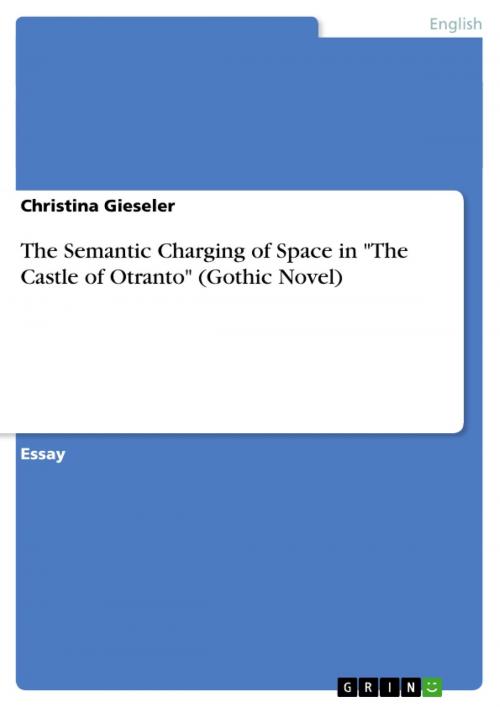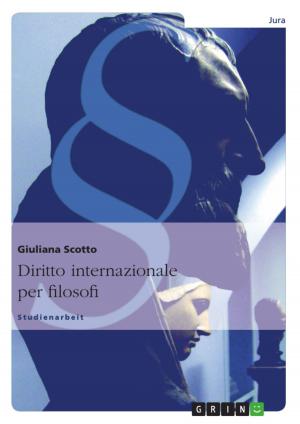The Semantic Charging of Space in 'The Castle of Otranto' (Gothic Novel)
Fiction & Literature, Literary Theory & Criticism, British| Author: | Christina Gieseler | ISBN: | 9783640604531 |
| Publisher: | GRIN Publishing | Publication: | April 26, 2010 |
| Imprint: | GRIN Publishing | Language: | English |
| Author: | Christina Gieseler |
| ISBN: | 9783640604531 |
| Publisher: | GRIN Publishing |
| Publication: | April 26, 2010 |
| Imprint: | GRIN Publishing |
| Language: | English |
Essay from the year 2007 in the subject English Language and Literature Studies - Literature, grade: 1,3, University of Wuppertal (Anglistik/Amerikanistik), course: The British Novel in the Late 18th and Early 19th Century, language: English, abstract: [...] An awful silence reigned throughout those subterraneous regions, except now and then some blasts of wind that shook the doors [Isabella] had passed, and which grating on the rusty hinges were re-echoed through that long labyrinth of darkness. Every murmur struck her with new terror [...] (Walpole 61). This passage of Walpole's The Castle of Otranto is only one example that shows how the construction of the setting in this novel strongly contributes to the atmosphere of the tale. Also in other passages it becomes obvious that the description of space and landscape conveys a specific meaning within the story, and even prefigures the development throughout the plot. Nünning and Nünning mention: 'Räume [fungieren] nicht nur als Schauplätze [...], sondern [erfüllen] eine 'Erzählfunktion' [...], 'räumliche Oppositionen [werden] zum Modell für semantische Oppositionen'' (cf. 132). Thus, several places and the landscape depicted in the setting may function as semantic carriers (cf. ibid. 133). In this essay it will be examined in how far space is semantically charged in Walpole's work, and how this influences the plot, the atmosphere within the story, and the reader's perception of it. In addition, it will be shown that the semantic charging of the settings in The Castle of Otranto is also influenced by its being a Gothic novel. Therefore, a definition of the latter term will be given as well...
Essay from the year 2007 in the subject English Language and Literature Studies - Literature, grade: 1,3, University of Wuppertal (Anglistik/Amerikanistik), course: The British Novel in the Late 18th and Early 19th Century, language: English, abstract: [...] An awful silence reigned throughout those subterraneous regions, except now and then some blasts of wind that shook the doors [Isabella] had passed, and which grating on the rusty hinges were re-echoed through that long labyrinth of darkness. Every murmur struck her with new terror [...] (Walpole 61). This passage of Walpole's The Castle of Otranto is only one example that shows how the construction of the setting in this novel strongly contributes to the atmosphere of the tale. Also in other passages it becomes obvious that the description of space and landscape conveys a specific meaning within the story, and even prefigures the development throughout the plot. Nünning and Nünning mention: 'Räume [fungieren] nicht nur als Schauplätze [...], sondern [erfüllen] eine 'Erzählfunktion' [...], 'räumliche Oppositionen [werden] zum Modell für semantische Oppositionen'' (cf. 132). Thus, several places and the landscape depicted in the setting may function as semantic carriers (cf. ibid. 133). In this essay it will be examined in how far space is semantically charged in Walpole's work, and how this influences the plot, the atmosphere within the story, and the reader's perception of it. In addition, it will be shown that the semantic charging of the settings in The Castle of Otranto is also influenced by its being a Gothic novel. Therefore, a definition of the latter term will be given as well...















